The Pembroke
- 113 units available
- 1 bed • 2 bed
- Amenities
In unit laundry, Granite counters, Hardwood floors, Dishwasher, Pet friendly, 24hr maintenance + more

Are you apartment hunting but worried about potential policies against aggressive dog breeds? Well, you're not alone. Nearly 60 million U.S. households own at least one dog. Many apartment complexes have breed bans that disqualify renters from owning certain dogs, regardless of the renter’s ability to pay rent or their pet’s warm temperament.
Even well-trained dogs can be denied housing simply based on their breed or appearance. In 2025, breed-specific rules remain common across rental properties. We've compiled everything you need to know about the policies, legalities, and steps to navigate them, along with a list of aggressive dog breeds.
Bans on aggressive dog breeds don’t all look the same and aren’t consistent from property to property. What’s restricted in Atlanta might be allowed in Denver, depending on local legislation, insurance coverage, and your landlord’s discretion.
Dogs flagged as “aggressive” are often those that display concerning behaviors, including:
If your dog is a rescue or mixed breed, you’ll need to consider how a landlord might perceive them. This is especially important if they resemble an aggressive dog breed. Even if your pup is well-behaved, some property managers may deny them based on appearance alone.
While correctly identifying them as a different breed may be helpful, it’s still up to your landlord. Breed restrictions are usually tied to safety concerns and insurance issues. Even if you have a rock-solid argument and a pet deposit ready, the rules can be challenging—but not impossible—to work around.
There are three main drivers behind the dog breeds not allowed in apartments:
It's important to know that many animal experts, including the ASPCA and the American Veterinary Medical Association, are opposed to breed-specific restrictions. They argue that a dog’s individual behavior, rather than its breed, is what truly determines aggression.
Are you unsure if your pup is on the list of aggressive dog breeds? Here are the top 23 on the list.
Pit bulls are often at the top of the most aggressive dog breeds list for apartments. These pups are usually restricted due to media portrayals and breed-specific legislation (BSL). Despite this, many owners report that they are affectionate and loyal.
The problem lies in their strength, bite force, and the potential damage they could cause if poorly trained or provoked. Even when raised in loving homes, their reputation follows them into apartment screening policies. Many landlords prefer to avoid the liability altogether or concerns from other tenants, regardless of the dog’s behavior.

American Staffordshire terriers are closely related to pit bulls and are often lumped into the same category. Their sheer strength and protective instincts make them targets for bans on aggressive dog breeds, even if they’re properly socialized. While many are calm, loyal, and playful with their families, their muscular build and high energy level often raise concerns.
Property managers may view them as unpredictable in shared spaces, especially around children or other pets. Even insurance policies often flag them as high-risk. Like pit bulls, they’re commonly restricted based on breed alone, no matter their individual temperament.
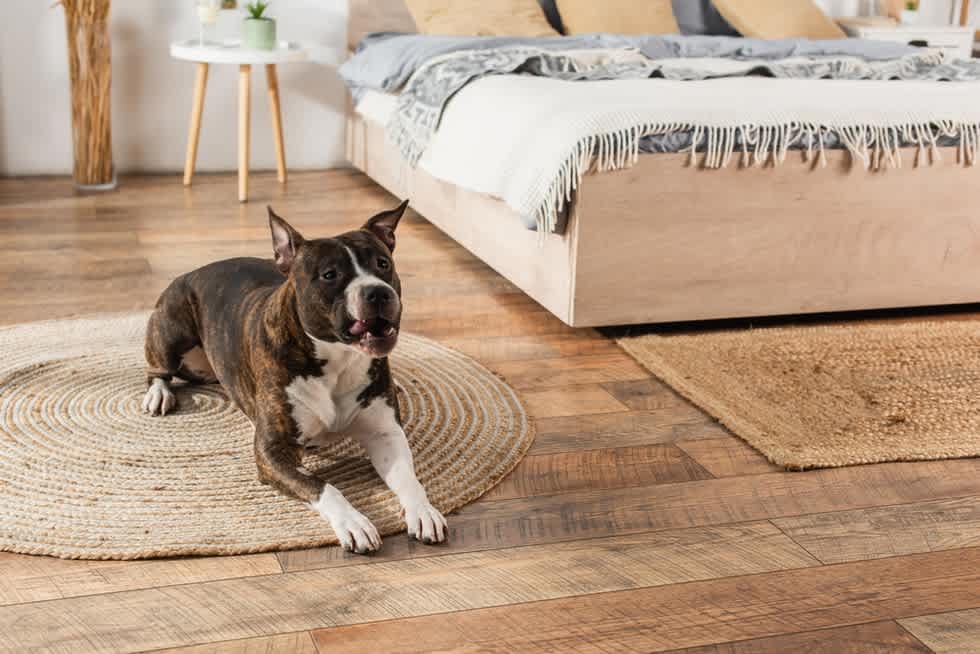
This breed is people-friendly but powerful. Their muscular build and close resemblance to bully breeds land them on the list for aggressive dog breeds. They are smaller than the American Staffordshire but still very strong and energetic.
While they tend to be affectionate and even goofy at home, their high prey drive and reactivity toward other animals can be an issue in apartments. Many landlords apply blanket restrictions due to visual similarities with pit bulls.
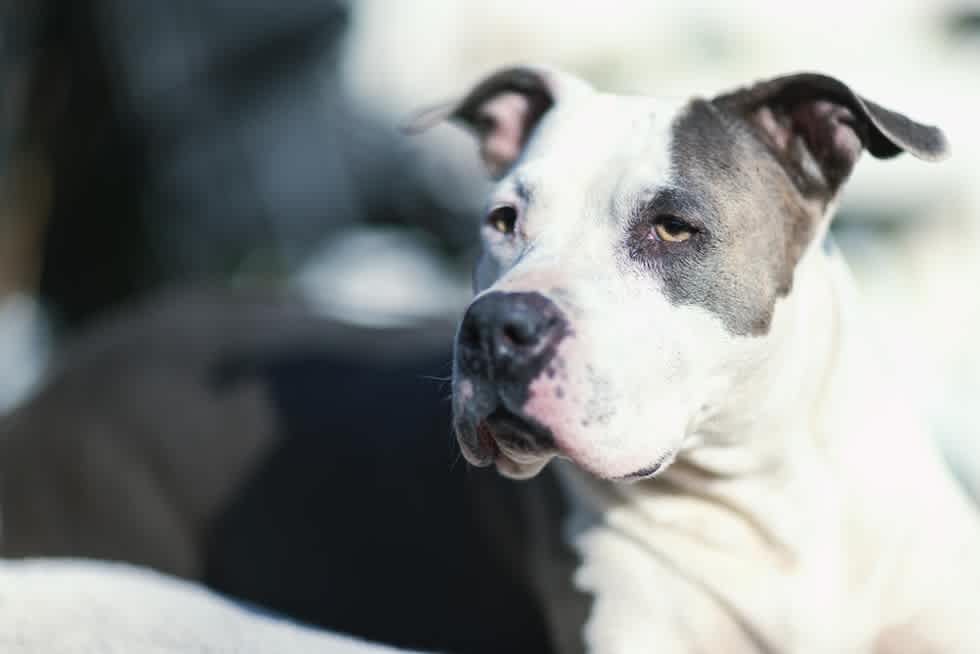
Rottweilers are intelligent and devoted, but their size, bite strength, and watchdog nature are a problem for many landlords. If you’re apartment hunting, don’t be surprised if they’re on most apartment blacklists. Their appearance alone can be intimidating in communal areas, even when they’re well-behaved.
Many insurance companies also consider them a liability, which influences rental policies. Rottweilers are natural guardians and may be reactive if they feel their space is threatened. While they can be calm and obedient with the right training, most property managers aren’t willing to take the risk.

Dobermans are elegant and powerful, but they often top the list of restricted breeds. They have a reputation as aggressive guard dogs, no matter how many years of training and discipline they’ve received from their owners.
Their intimidating stance and alert posture can cause concern in shared apartment spaces. Dobermans were originally bred for protection, and that instinct still runs strong. While loyal to their families, they may be wary of strangers or other pets in high-traffic areas.

German shepherds are a versatile working breed and a favorite for police and military roles. However, they’re banned in many apartments for their dominance and territorial behavior.
Their size, intelligence, and alertness can lead to overprotectiveness, especially in unfamiliar environments. Even well-trained shepherds may become vocal or reactive if they perceive a threat near their home. In tight apartment spaces, all of these factors can create conflicts with neighbors or maintenance staff.

Despite their fluffy exterior, chow chows are known for their aloof and fiercely protective behavior. They tend to bond with one or two people and remain standoffish with strangers, which can be a problem in shared apartment hallways and elevators. They may not respond well to unexpected interactions with other pets or people. Their territorial instincts, combined with low tolerance for rough handling, make them less adaptable to high-traffic environments.
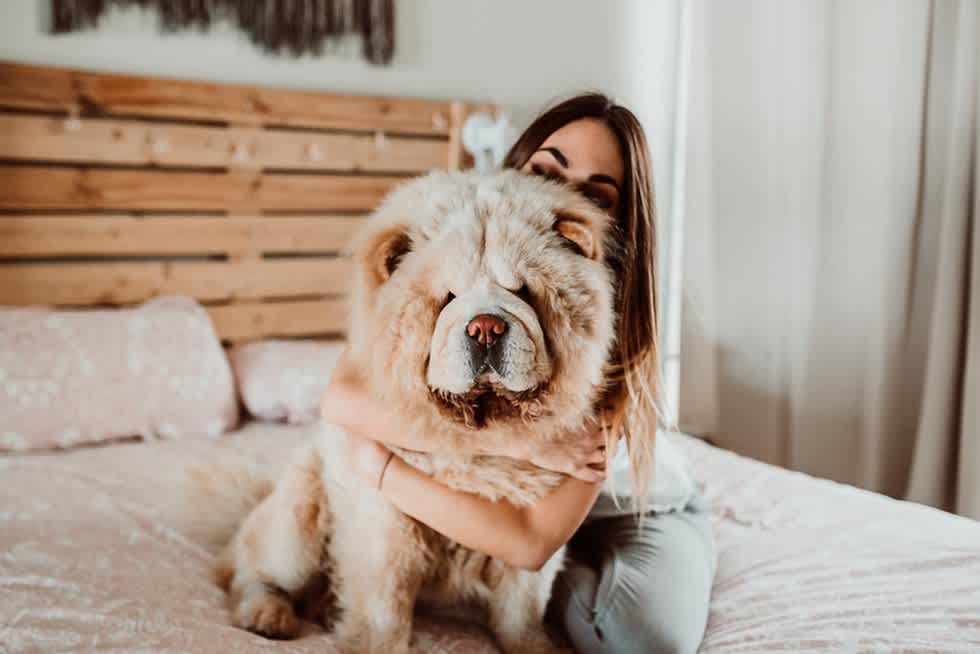
With roots as an Italian guard dog, Cane Corsos are alert and imposing. Their natural guarding instincts often raise red flags for property managers and landlords. This dog breed is muscular, highly intelligent, and bred for protection with traits that can be seen as risky in an apartment.
These pups tend to need consistent structure, space, and strong leadership to thrive. In shared environments. But their size and suspicious nature can cause unease, even if they’re not aggressive. Many apartments automatically ban them due to their appearance alone.
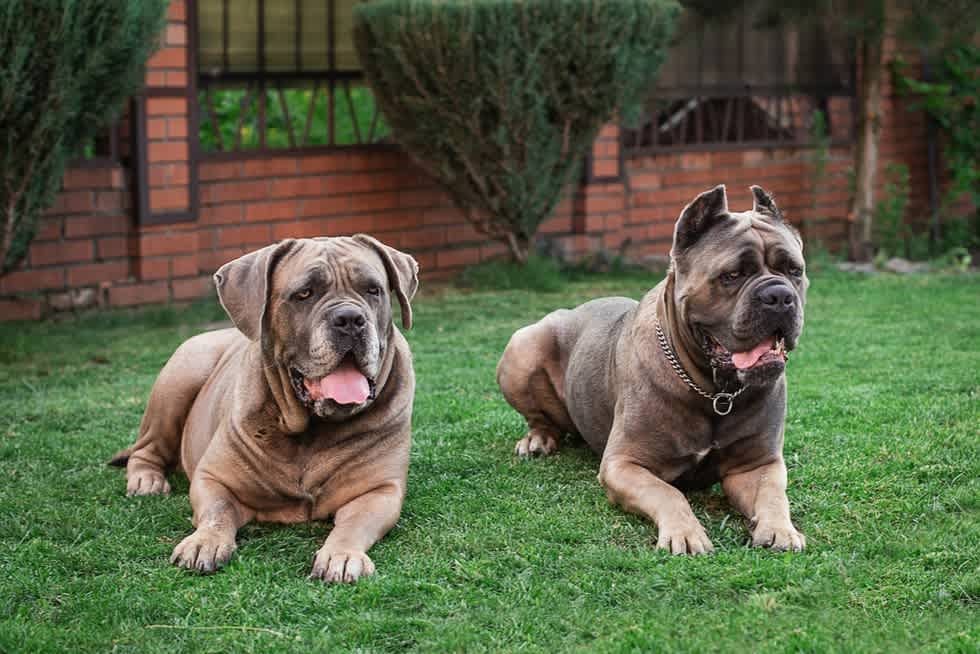
Akitas are loyal to their families but wary of strangers and are considered an aggressive breed of dogs. Many landlords perceive their strong guarding nature and independence as a problem and a sign of aggression. Akitas were originally bred for hunting and guarding in Japan and are less tolerant of chaos, unfamiliar dogs, or high-density living. In an apartment setting, they may become overly territorial or reactive to new sounds and smells. As a result, they’re frequently on rental and insurance blacklists.
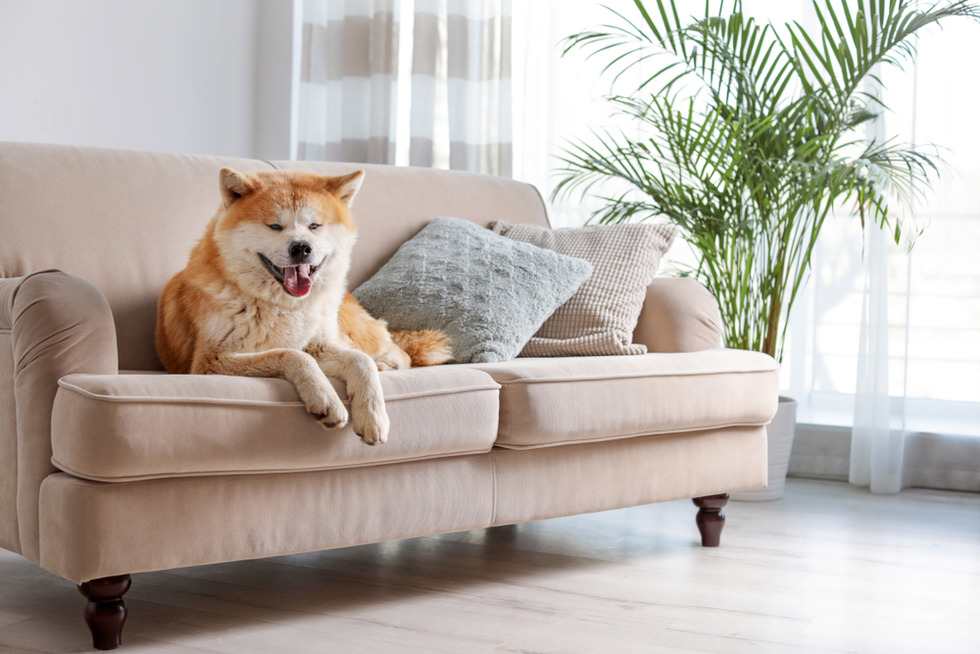
Malamutes resemble wolves and are known for high energy and stubbornness. Their sheer size and strength make them a concern in communal areas like apartment courtyards.
Originally bred for pulling sleds in harsh climates, these dogs require a lot of physical activity and mental stimulation. When they’re stuck in an apartment for too long, their boredom can quickly turn into destructive behavior or escape attempts. They’re also highly vocal, strong-willed, and often dig or chew when under-stimulated. Even if you train an Alaskan Malamute, their high prey drive and independence can be difficult to manage in confined spaces.
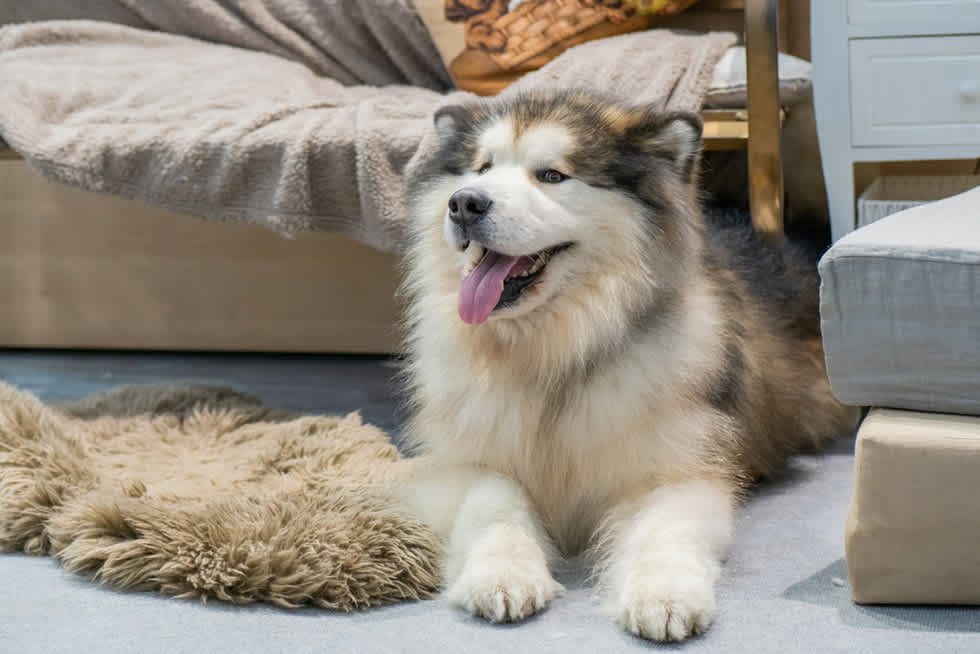
These stunning dogs can be mischievous and vocal. Although they’re not always perceived as aggressive, they resemble wolf hybrids and are renowned escape artists. Their high energy and love for running can make them a poor match for confined spaces like apartments.
Huskies are also known for being stubborn and independent and are prone to behavioral issues if they’re not properly exercised or mentally engaged. They also tend to howl and bolt, which can pose problems with apartment neighbors and landlords. Many rentals include them on restricted lists for being disruptive or high-risk, even without a bite history.

Any breed with wolf DNA is typically prohibited and firmly on the list of aggressive dog breeds. These animals are also considered unpredictable and are often subject to legal restrictions. Even experienced owners can struggle with the wild instincts and temperament these hybrids bring.
Their behavior can be less domesticated than other breeds and more reactive, especially around noise, strangers, or confined environments. Many states have regulations or outright bans on owning wolf hybrids and landlords aren’t eager to take a chance.
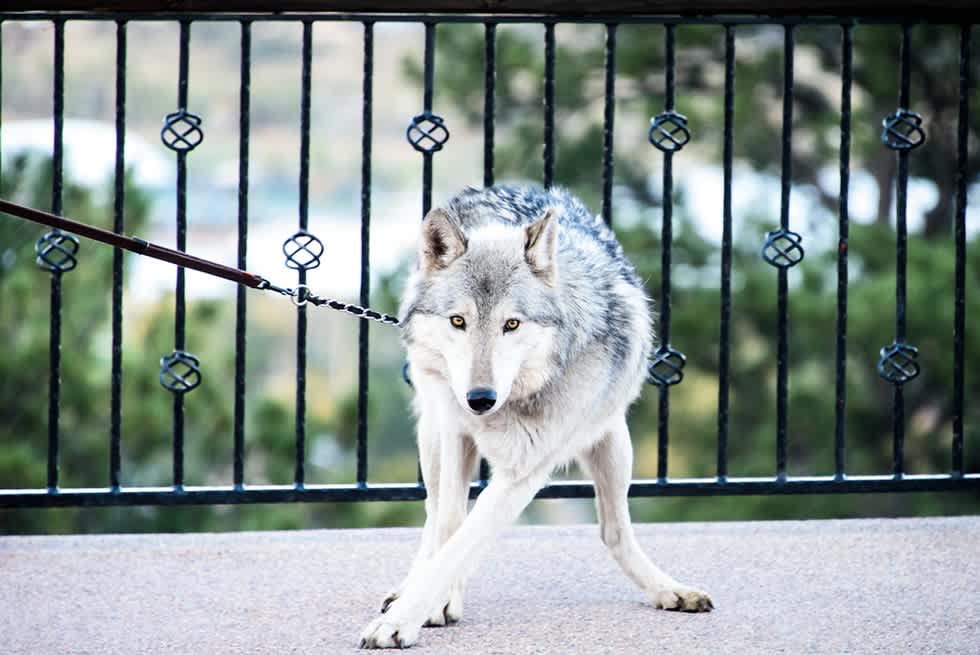
Bullmastiffs are affectionate toward their families but are powerful and can be territorial and fierce if challenged. Their size alone makes them a liability for many landlords and property managers. These dogs were bred to be silent watchdogs and could act without warning if they sensed a threat. Even with training, it’s not always possible to ensure a Bullmastiff won’t react if they feel challenged. In close quarters, this can be a problem around unfamiliar guests or neighbors.

Often called gentle giants, Great Danes are sweet-tempered but extremely large and imposing. Many apartments restrict them due to their size and strength and not necessarily because of aggression. A wagging tail alone can knock over objects or small children in tight spaces. Their physical presence can be overwhelming and intimidating in shared hallways or elevators. Insurance companies often classify them as high-risk purely due to their size, even with no history of aggression. They also require room to stretch, which small apartments rarely offer.

Boxers are energetic and playful and can be rambunctious in small spaces. Their strength and enthusiasm are sometimes misinterpreted as aggression. These dogs tend to bounce off walls, quite literally, and thrive on endless activity and interaction.
Without proper exercise, play, and outlets, they can become vocal and destructive and interfere with apartment living. Their protective nature and strong bark can also make neighbors uneasy. It’s not uncommon for landlords to assume they’re too high-strung for apartment life.

Presa Canarios have a reputation for being assertive and dominant. Their large build has landed them on the list of frequently banned breeds. Originally bred for working livestock and guarding, they are naturally Presa Canarios were originally territorial and protective, but in close quarters like apartments, these traits can raise concerns.
They’re not ideal for new dog owners and need significant training and leadership. Even with all of the precautions and proactive training in place, this dog breed is still usually a no-go for landlords.

Dogo Argentinos were bred for big-game hunting and are known for their strength, bravery, and territorial behavior. They often appear on insurance blacklists and the dangerous dog breed list for apartments.
These muscular dogs have a strong prey drive and assertive personality that demands firm training and control. Regardless, their appearance can intimidate others in apartment lobbies and hallways, even when well-behaved. Many landlords view them as too powerful and unpredictable for apartment environments.
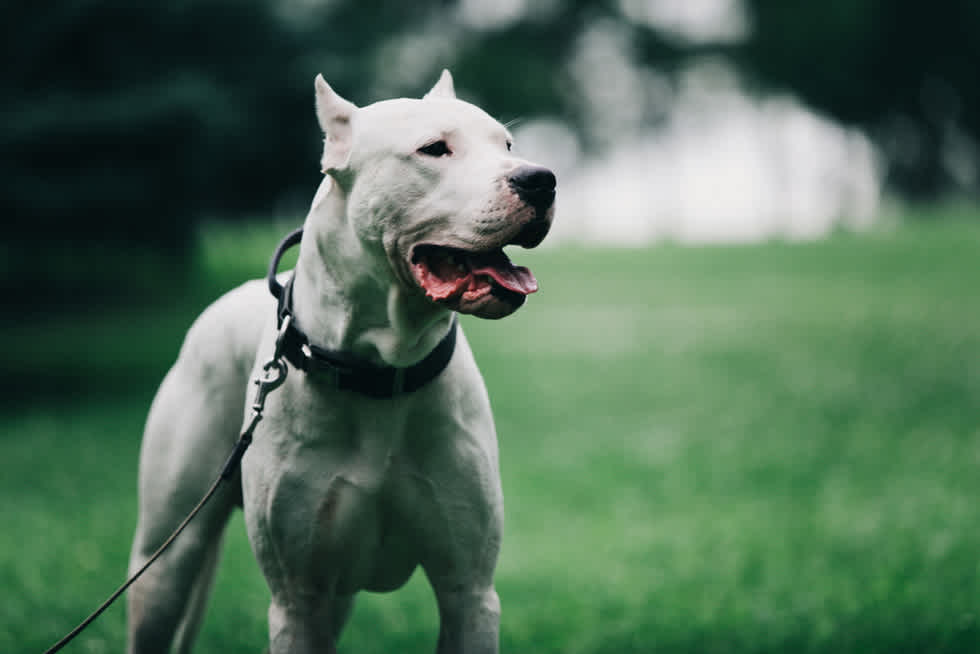
This Japanese fighting breed is a rare find for dog lovers. You’ll also find they’re frequently on the aggressive dog breeds list for apartments due to their size, strength, and fierce attitude.
Tosas were originally bred for dog fighting in Japan and can be relatively calm today, but their past reputation still follows them. They have a quiet intensity and wariness of strangers that can make them appear unpredictable. This dog breed needs structured environments and consistent training that can be difficult to maintain in small or high-stress living areas. Most apartments won’t allow them, even with a clean behavior record.
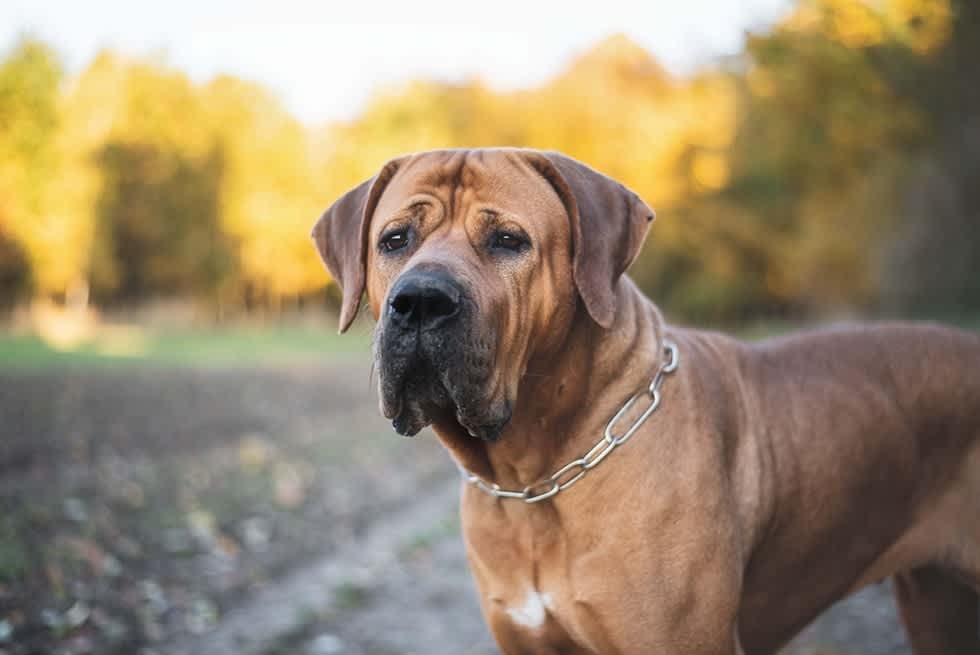
Filas are loyal but known for their distrust of strangers. Their aggressive guarding instincts make them a high-risk choice in apartment communities and public spaces. These dogs were bred to track and hold fugitives, not to socialize in apartment hallways and elevators.
They can be hard to handle around strangers and usually bond with one or two people. Filas are often banned by both landlords and local regulations, making them among the most difficult aggressive dog breeds to house in rental properties.

American bulldogs are often confused with pit bulls for their powerful, athletic, and protective stature. They also come with personality traits that often alarm landlords and other tenants. For example, their enthusiasm and physical strength can mean accidents and injuries when not carefully managed.
Although American Bulldogs are usually friendly with their families and friends, they can be territorial or reactive toward unfamiliar people or pets. Some apartment managers see them as a potential risk, even if they’ve never shown aggressive behavior.

Kangals are livestock guardians known for their incredible bite force. Their intimidating size and dominance put them on the list of aggressive dog breeds and come highly restricted in apartment buildings. These were originally bred to fend off predators like wolves and bears, meaning they take their guarding duties very seriously.
Dog owners will find their independent nature and wariness of strangers don’t mesh well with the bustle of apartment life. Landlords are unlikely to approve them, and this breed is usually better suited for rural or large-property living.

Boerboels were originally bred to protect their homesteads in South Africa. They’re also a massive breed that is naturally wary of strangers and often restricted in apartments. They come with an intimidating power and guarding instincts can be too much for a shared living space. Insurance companies frequently list them among dangerous breeds, which discourages landlords from accepting them. Most rental insurance policies also don’t make exceptions for this aggressive dog breed.
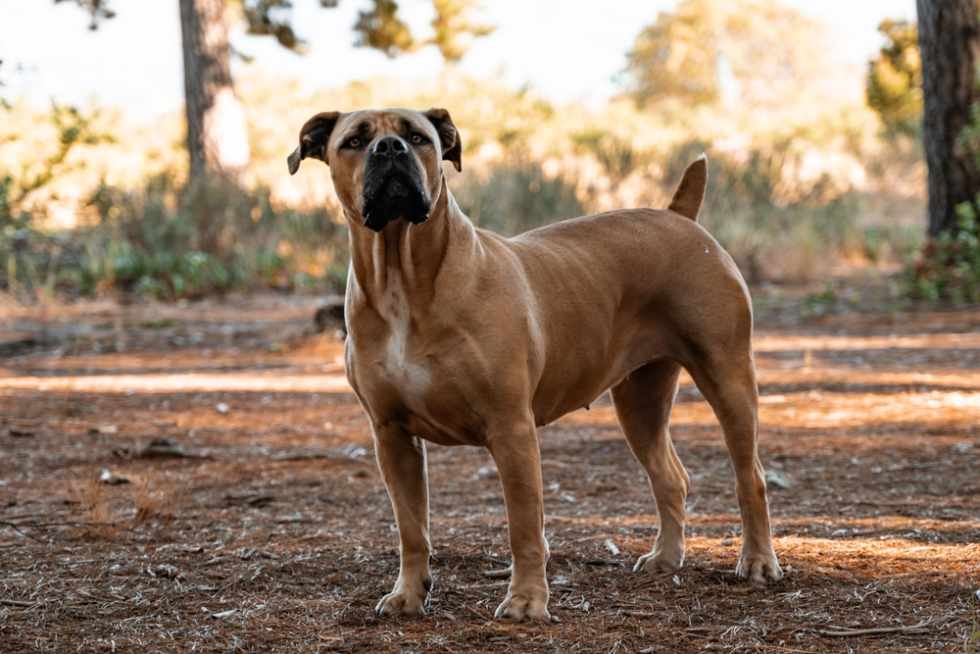
Do you have a dog with unknown or mixed parentage? Many dogs with mixed lineage are automatically banned. Even if your lovable mutt is only 5% pit bull, they might get banned simply for looking too much like a dangerous dog breed.
Apartment complexes often rely on visual identification and apply broad restrictions, especially if your pet has a bulky build or a blocky head shape. Mixed breeds with traces of Rottweiler, shepherd, mastiff, or bully-type lineage can be denied housing, even with a DNA test.
Enforcement varies for aggressive dog breeds, but common methods include:
While it’s tempting to omit your dog’s breed on an application or lie altogether, dishonesty could lead to a costly eviction. There are more ethical and practical strategies to help you keep your dog and land the apartment of your dreams.
A calm, well-behaved dog can win over a skeptical landlord in person. Ask if your dog can meet the manager for a temperament test.
Include your dog’s age, vaccination history, obedience training, photos, behavior certifications, and temperament notes. Add references from previous landlords, neighbors, or trainers to help your cause.
A dog who has completed a formal training program, especially a CGC certification from the American Kennel Club (AKC), may stand a better chance of getting an exception from your landlord’s aggressive dog breeds list.
Offer to carry renters insurance that covers pet liability of $300,000 or more to help reduce the landlord’s own risk.
If you’re willing to pay extra for a pet deposit or pet rent, you may win over a landlord. Doing this shows your confidence in your dog’s behavior and offers financial security for the property.
If your dog provides emotional or psychological support, and your mental health provider agrees, they may qualify as an ESA under the Fair Housing Act.
A breed test can clarify any outstanding doubts, especially if your dog only partially resembles a restricted breed.
The answer is complicated. Landlords have the legal right to set their own pet policies on their private property. However, the Fair Housing Act (FHA) prohibits discrimination against people with disabilities, even against aggressive dog breeds. That means service dogs and ESAs are legally exempt from breed bans, even if they’re a restricted breed.
Some states have also banned breed-specific legislation (BSL) at the municipal level; however, this doesn’t apply to private rental agreements. As of 2025, states like California, Colorado, and Texas have laws against BSL, but apartments can still set their own rules.
Your landlord may already have a list of nonaggressive dog breeds they’re ready to welcome to the premises. Other apartment buildings are moving away from breed bans altogether in favor of:
These alternatives aim to encourage responsible ownership rather than penalize dogs for their genetics.
If your dog is a rescue or mixed breed, landlords may deny you based on appearance alone. A DNA test could be your best bet to challenge the judgment and win your case. Here’s how to use a pet DNA test effectively:
DNA testing for aggressive dog breeds focuses on facts rather than assumptions and is a powerful way to persuade open-minded landlords.
Even with preparation, some renters will face rejection due to their dog’s breed. There are still some options to consider:
Getting turned down doesn’t have to be the end of your search. Instead, it can be the start of a new search that’s tailored to the kind of place that’s perfect for you and your dog.
If you don’t have a dog yet and are about to move to a new apartment, you might want to consider choosing one with a gentle temperament that is already apartment-approved. These popular breeds are ideal for renters.
Choosing a calm, apartment-friendly dog breed can keep you off the list of aggressive dog breeds and make your apartment hunt easier.

Restrictions on aggressive dog breeds remain a significant challenge for responsible pet owners in 2025. Although the intention is to protect others and keep insurance premiums low, the policies are often unfair, penalizing well-behaved dogs and their humans.
If your dog is on the list of aggressive breeds of dogs, don’t panic. A strong pet resume, the right paperwork, and open communication could help you score the apartment you really want.
Ready to find an apartment that’s friendly to aggressive dog breeds? Take the quick Apartment List quiz to narrow your search. With us, you’ll spend five minutes and save 50 hours searching.
There is no official list of aggressive breeds. However, some of the most commonly banned dogs from apartments include the American pit bull terrier, rottweiler, Doberman pinscher, and cane corso. These dogs are often listed as aggressive because they possess strong guarding instincts, are highly muscular, and are naturally protective.
“Aggressive dog breeds" is a controversial term used by insurance companies, apartment complexes, and local ordinances for dogs that are perceived as aggressive. The label isn’t always fair because a dog’s behavior depends more on individual training and socialization than on breed alone.
Check the pet policy or ask the leasing office directly about their apartment breed restrictions. Don’t rely on visual assumptions; instead, obtain breed verification from a veterinarian or conduct a DNA test.
Mixed breeds are often restricted if they resemble an aggressive dog breed. Ask your landlord if DNA evidence or behavior testing can override the restriction.
Yes. In most cases, misrepresenting your pet could lead to an eviction and make it harder to rent an apartment. It’s not worth the risk.
Yes. Under the Federal Housing Administration, landlords must accommodate service animals and ESAs, regardless of whether they’re considered aggressive breeds. You will need to provide documentation from a medical professional certifying your dog as a protected individual.
Many properties limit pets to 25 to 50 pounds in weight. These limits are often arbitrary and not based on aggressive behavior.
Anti-BSL states like Colorado, California, Texas, Florida, and Illinois have banned breed-specific legislation. However, private properties can still impose their own breed restrictions.
To find apartments that allow pit bulls, contact landlords or property managers directly to inquire about their breed-specific policies. You can also look for rentals through private owners who are more open to aggressive dog breeds.
Yes. German shepherds are often considered an aggressive breed due to their strong guarding instincts and protective nature around strangers. Properly training and socializing German shepherds can help make them loyal, obedient, and well-behaved companions who aren’t a threat to others.

In unit laundry, Granite counters, Hardwood floors, Dishwasher, Pet friendly, 24hr maintenance + more
In unit laundry, Patio / balcony, Granite counters, Pet friendly, Stainless steel, Walk in closets + more